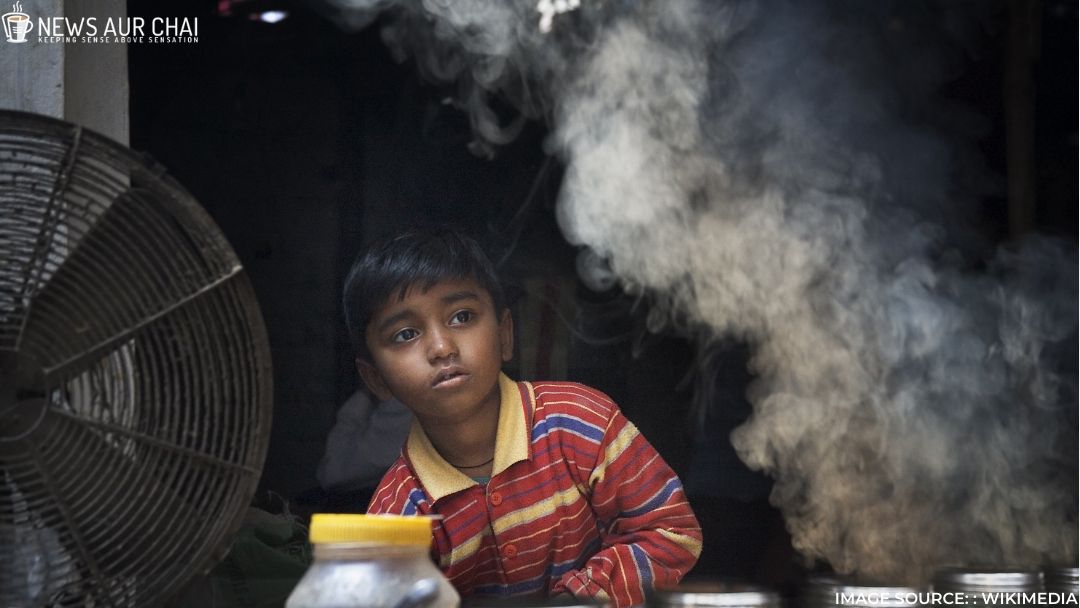
Over the last few months, mankind has lurched into one of its greatest emergencies since World War 2. The world is indeed fathomless struggling with epoch-making public health menace, the COVID-19. This peril has propelled a significant chunk of the population to home-confinement, and the rest are involved rather selflessly in uneven mortal combat against it, creating a situation of global socio-economic deadlock.
It is likely to say that the socio-economic consequences of the pandemic are distributed unequally, affecting the already disadvantaged or vulnerable situation unprecedentedly, and one amongst them are children in child labour.
There are 152 million child labourers worldwide. Notwithstanding the prohibition of engagement of children below the age of 14 in all occupations, India alone is home to 10.1 million child labourers between the age group of 5-14 years (Census 2011). Child Labour has seen a decline of 2.6 million between 2001 and 2011. However, there are still millions of children who need to be freed from all forms of child labour, and it a far milestone that needs to be reached despite challenging economic and livelihood crises.
The statistics show that in such pressing times if the Central Government in conjunction with State Governments do not take prompt and accelerated efforts to address this issue, we are going to lose the battle of eliminating all forms of child labour by 2025, a commitment under the sustainable development goals (SDGs).
The pandemic is also a witness of a major amendment in the labour laws in states like Uttar Pradesh, Gujrat, Rajasthan, Himachal Pradesh and Punjab which may prove to be an impediment to end child labour in India. At least seven states have raised working hours with no factory inspection, and no inspection of firms with less than 50 workers; least accountability and monitoring mechanism under these changed labour laws will further increase child labour.
In India, approximately 122 million Indians are left jobless due to the unprecedented reverse migration during the pandemic, and 75 per cent of them are daily wage workers and small traders, stated the Centre for Monitoring Indian Economy. The latest World Bank report also says 12 million Indians are at high risk of extreme poverty defined as living on less than $1.90 a day.
The appalling state of the economy could lead the children of migrant families getting engaged in agriculture, harvesting and other small scale family enterprises, resulting in the misuse of 2016 Amendment of Child Labour Law that allows children up to 14 years of age to work within a family-run enterprise. This will undoubtedly have a more negative impact on children’s routine and could affect their health.
“COVID-19 has resulted in stress for children and a potential income loss to families forcing children to help them earn a livelihood. Consequently, children engaged in work may not return to schools when they open up,” said Dagmar Walter, Director, The International Labour Organisation.
What would it take to eradicate child labour by 2025? That's just five years from now, but the goal is not out of reach. https://t.co/8ZrHWZ9WXV
— International Labour Organization (@ilo) January 29, 2020
The issue needs immediate attention right from the parents to the integrated policies and programmes by the government to provide income support, proper ration distribution to the vulnerable to minimise the probability of children being made to enter the workforce. The initiatives should be accompanied by prioritising efforts to continue education for all children, using all available technology, inclusive of all school expenses to step towards the aim gradually.
“We collectively will have to create such a plan which can be implemented in an Indian context and get the desired result. The COVID-19 pandemic has created a big challenge in front of the world, and India…its negative impact on the economy has also created the possibilities of an increase in child labour. We have to stay alert and work towards eradicating it,” said, Santosh Gangwar, Labour Minister.
The society in large is oblivious of the existence of the issues of child rights and child protection, hence heedless to acknowledge its related problems to children’s psyche. This makes the matter more grave and challenging to assess. Therefore, it is apparent that more stringent policies/schemes and its implementation; coming together of the society, NGO, and independent organisation is needed to prevent the innocent lives from lapsing into labour and help to achieve the aim of ending child labour which right now is a distant dream.






One Comment